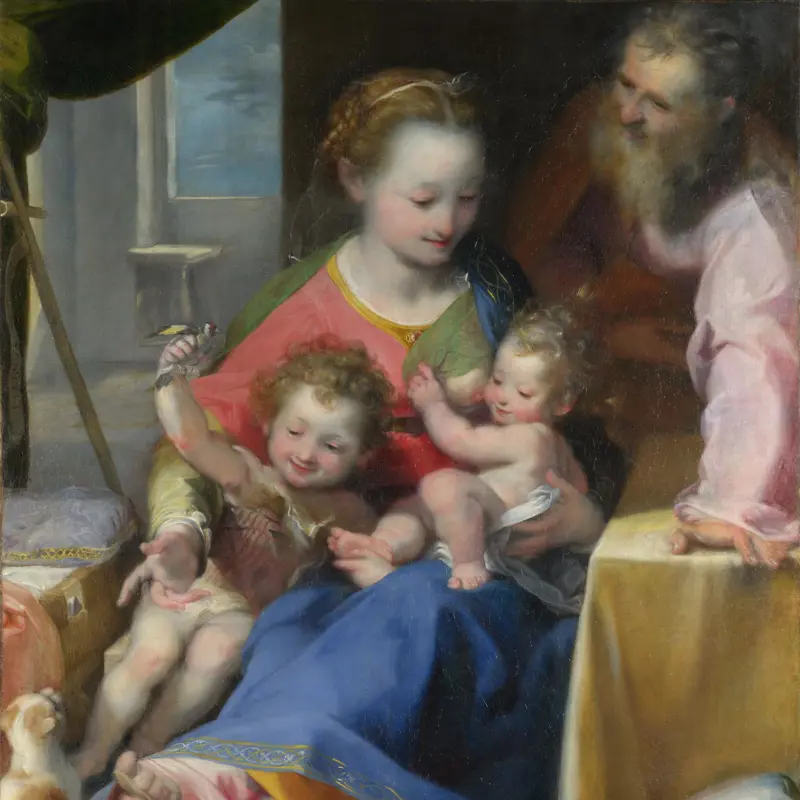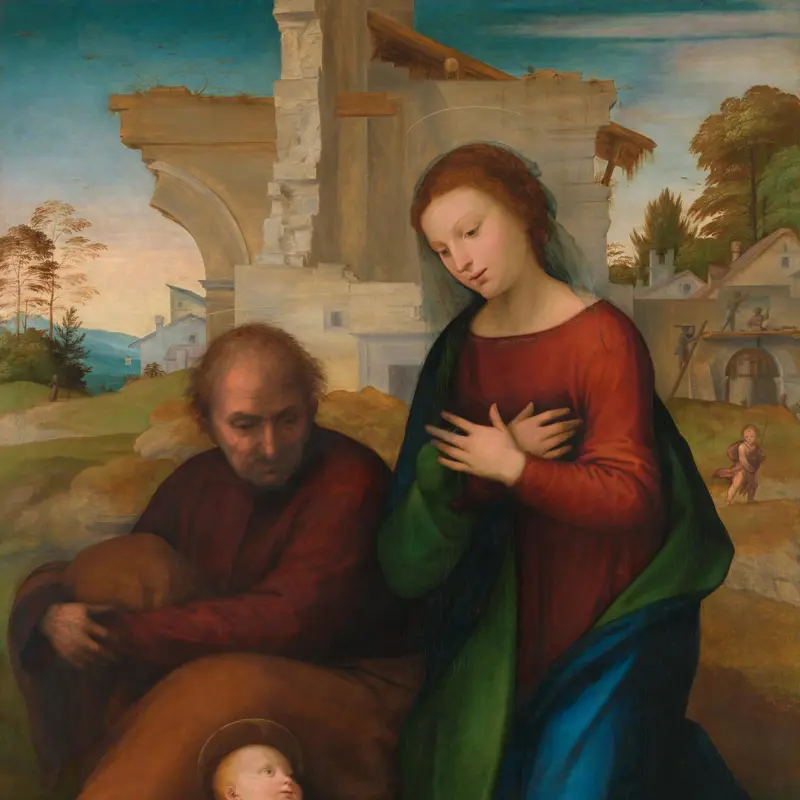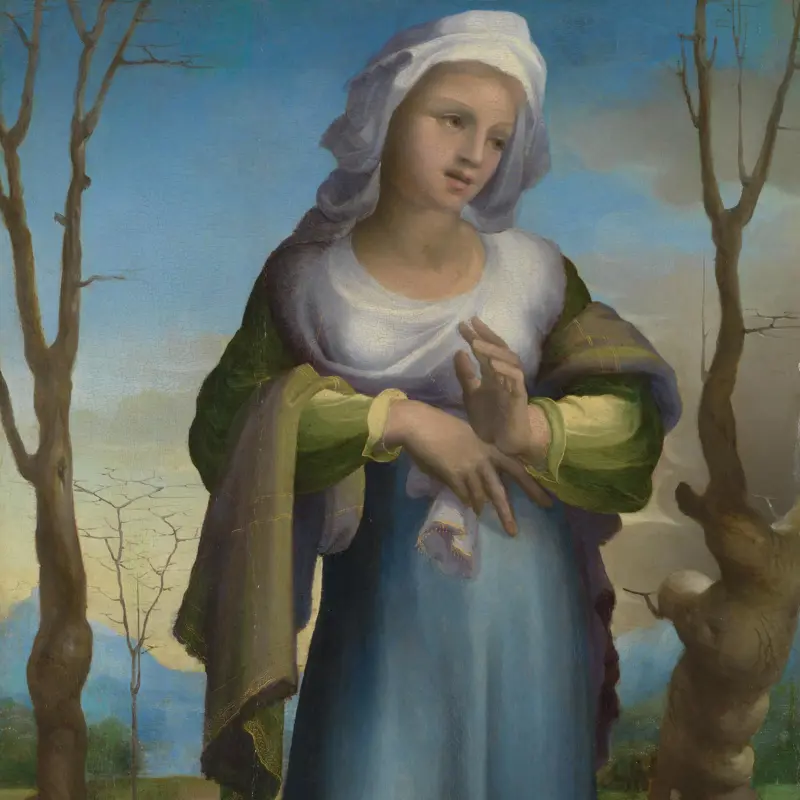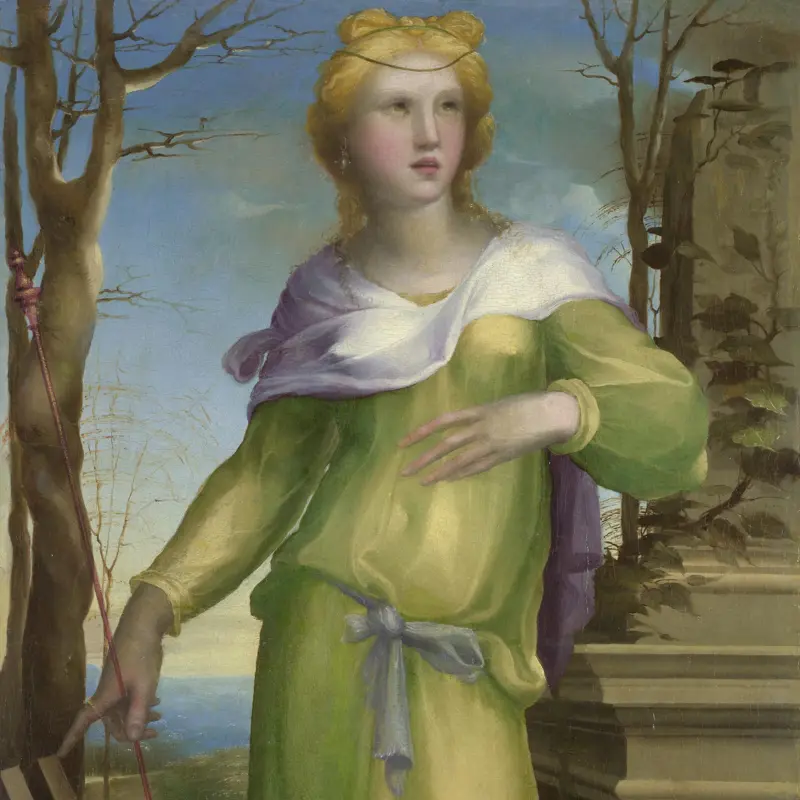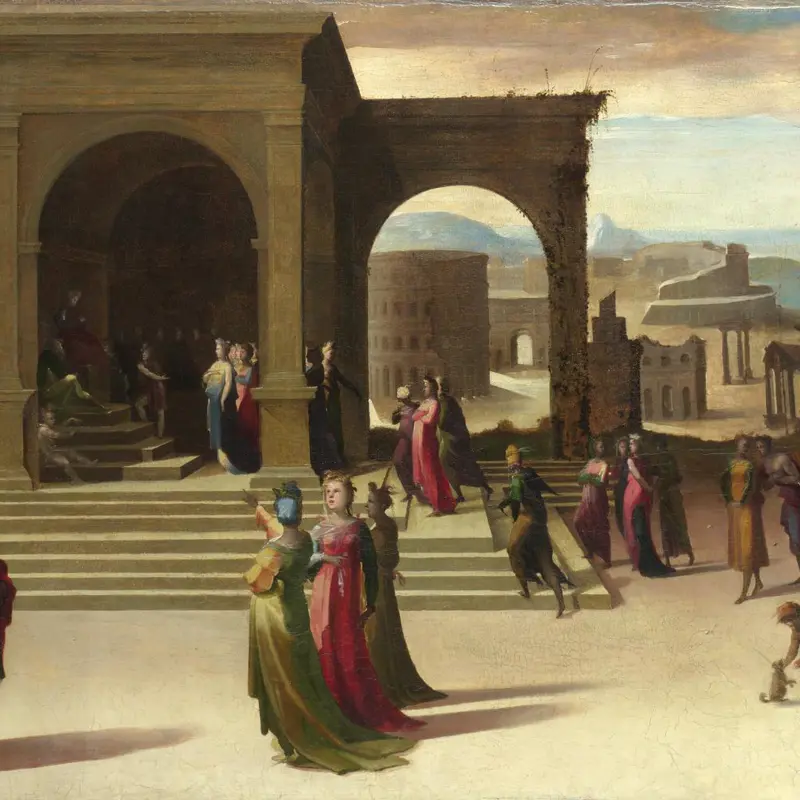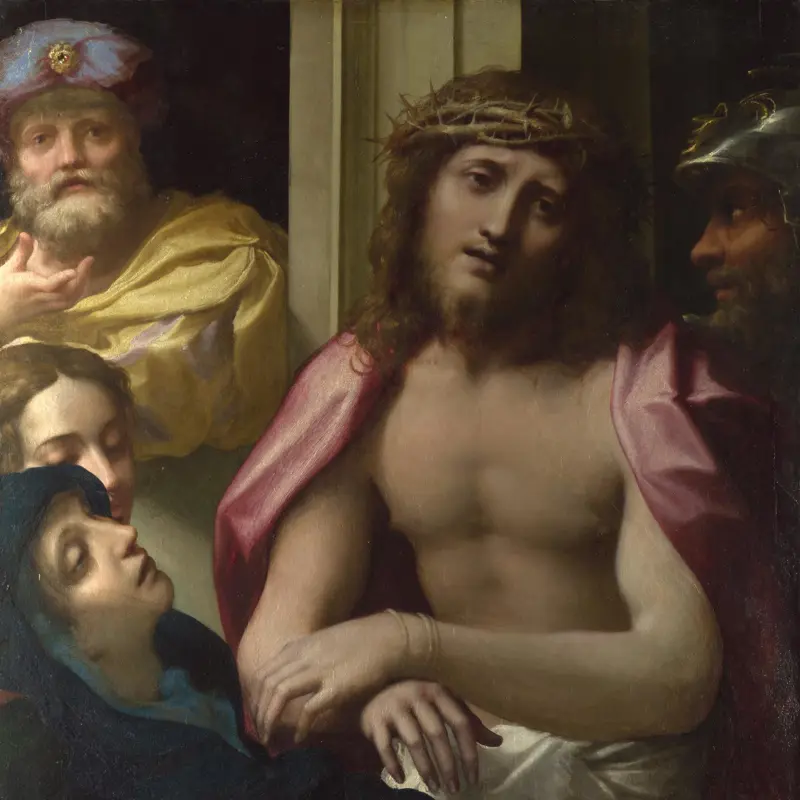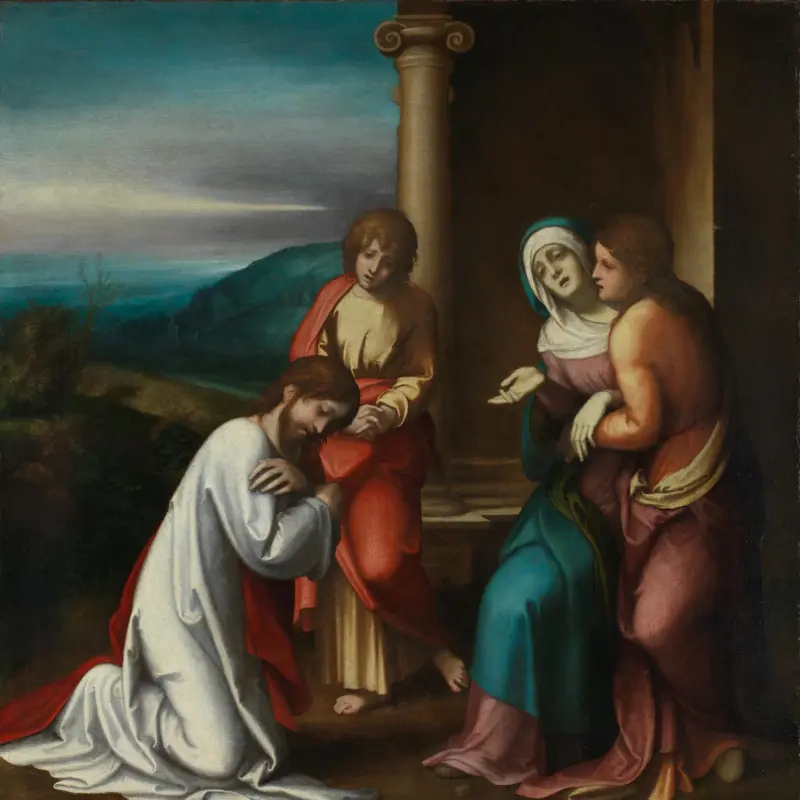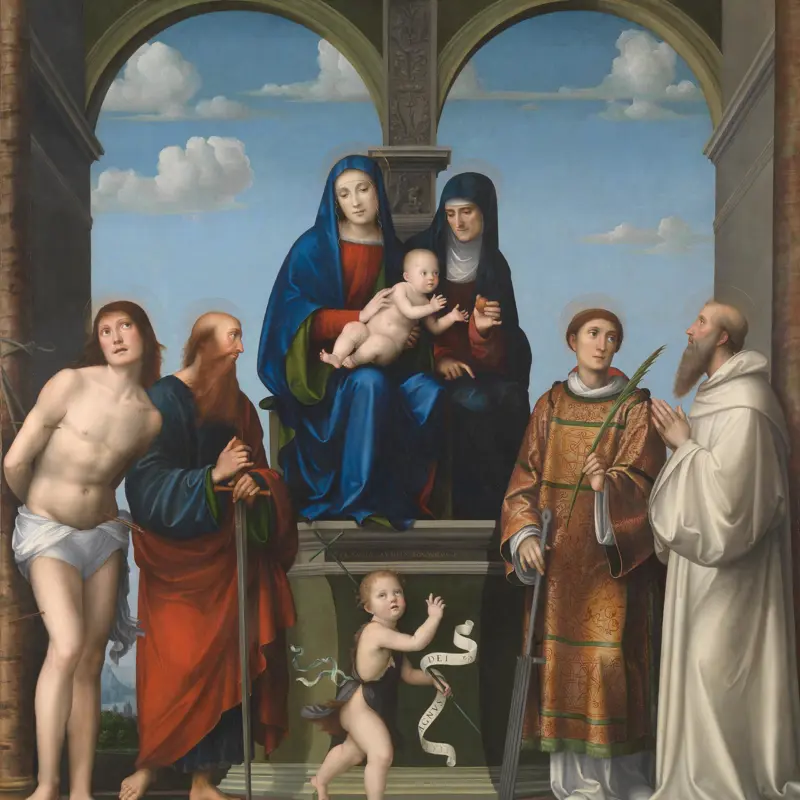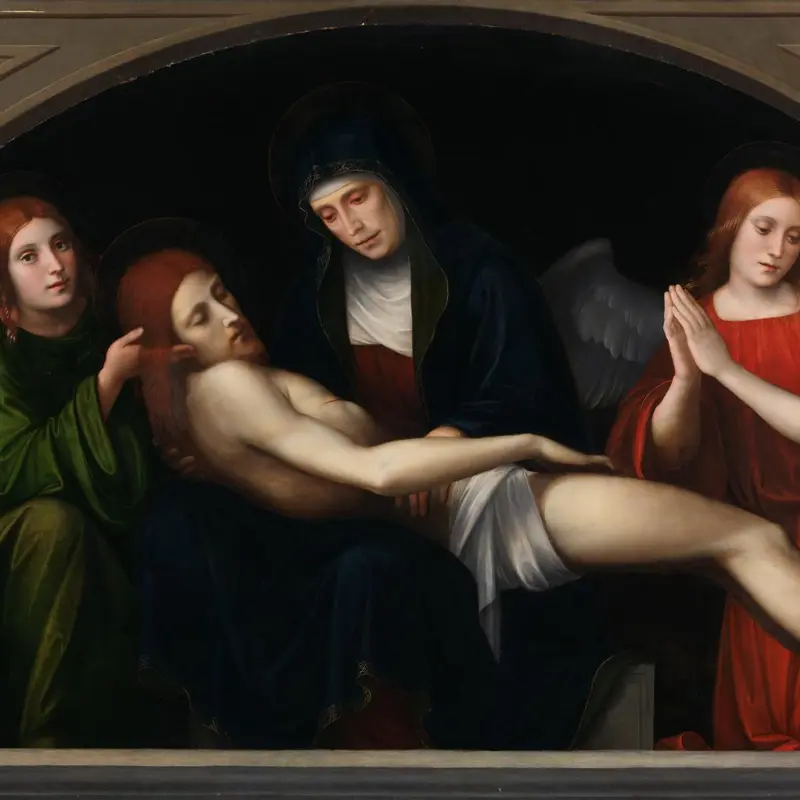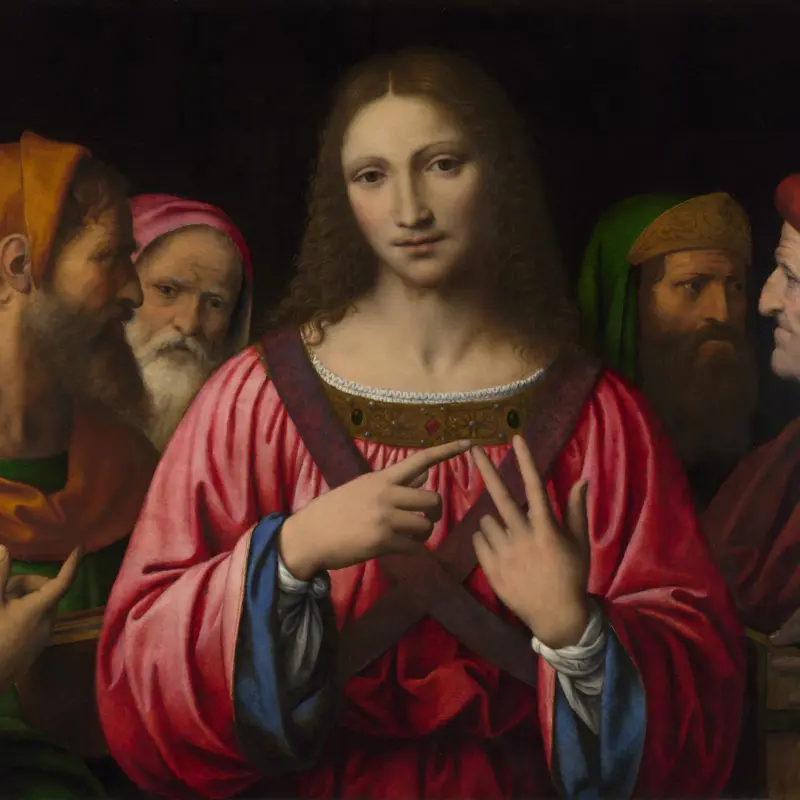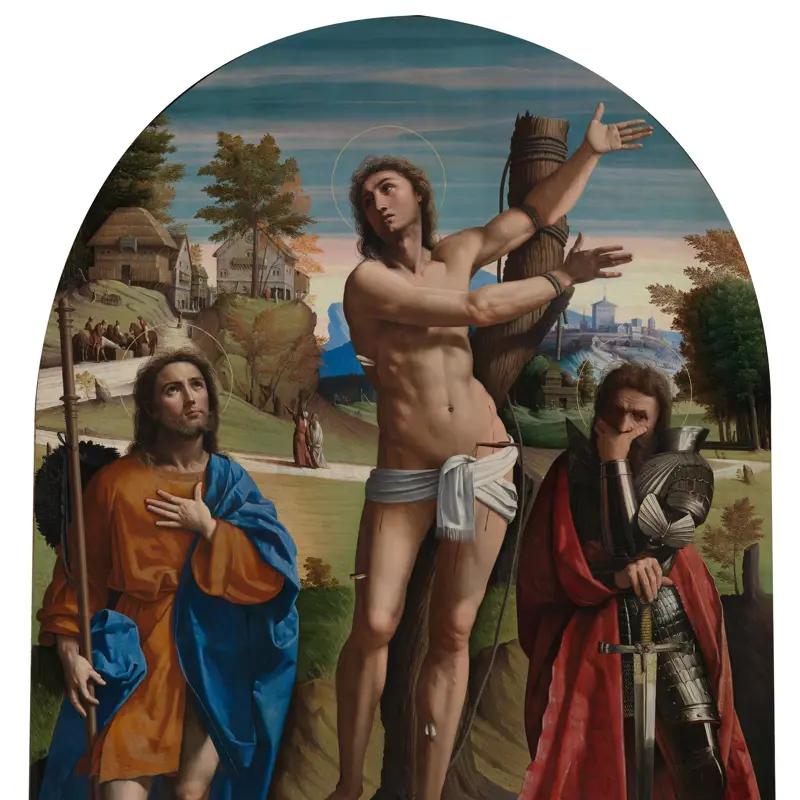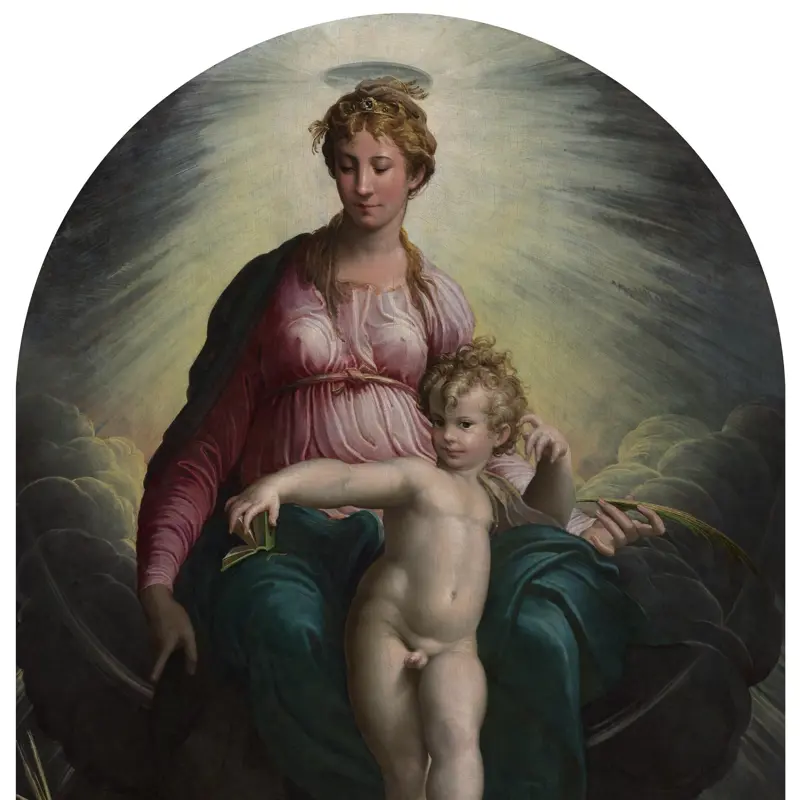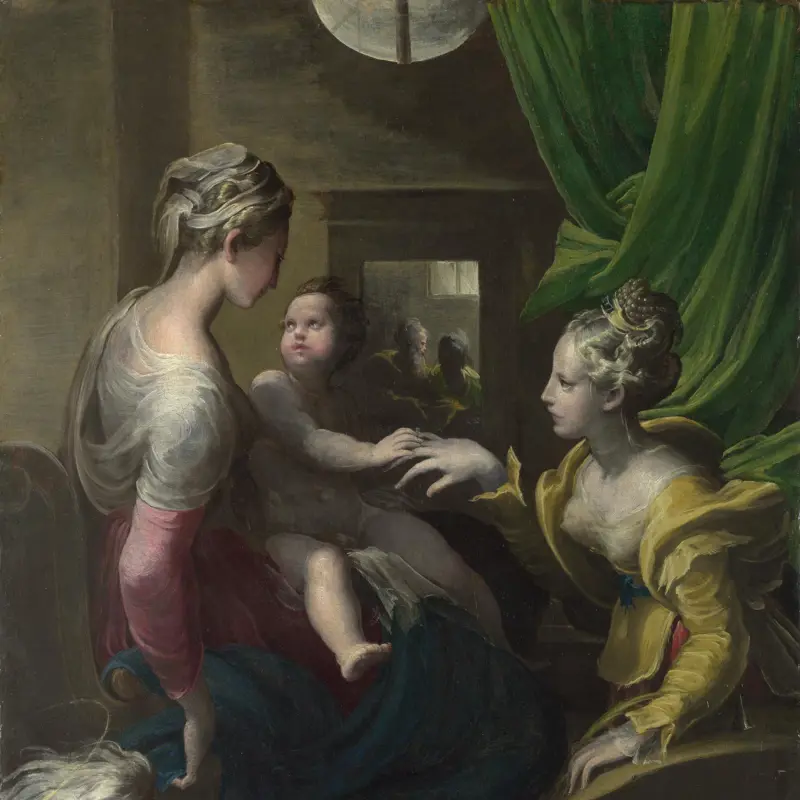The early decades after 1500 saw a lively exchange of ideas between leading artistic centres such as Venice, Florence and Rome. Painters developed distinctive styles that became hallmarks of their cities. Venice focused on colour and brushwork; Florence strove for mastery in drawing and design. Northern European prints also provided a wealth of inspiration.
In Bologna, Francesco Francia perfected smooth paint surfaces and colourful landscapes in the tradition of Perugino and Raphael. Beccafumi in Siena experimented with dramatic light effects and radiant colours. Florentine artists were deeply impressed by the presence of Michelangelo’s powerful sculptures. They studied his energetic bodies and gestures through drawings, capturing in paint their vigour and monumentality with translucent mid-tones and glimmering colour contrasts.
The use of canvas as a painting support gradually became widespread. Correggio’s paintings combine soft contours and rich shadows with saturated colours. His works in Parma were a major source of inspiration for the young artist Parmigianino before he moved to Rome.


